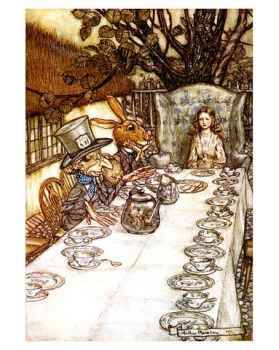First a rant…
The author, Kent Haruf, does not use quote marks. At all. Ever. Which makes it very difficult at times to figure out if someone is speaking or thinking. Or if the same person is speaking.
And this book is a National Book Award Finalist? It wouldn’t have gotten past my 8th Grade teacher!
Okay, now I feel better…
The book starts with this definition: Plainsong—the unisonous vocal music used in the Christian church from the earliest times; any simple and unadorned melody or air.
(I guess that’s why Mr. Haruf didn’t use quote marks.)
Plainsong is a “slice-of-life” novel, primarily about nine months in the life of six people who live in ranch country somewhere in the Midwest. The chapter titles are simply the name of the character (or, in the case of Ike and Bobby and the McPherons, characters) whose viewpoint (or viewpoints) is presented. Gradually, the characters and the threads of their story come together.
But the novel just ends. Mr. Haruf makes no attempt to resolve any problems or issues. In a way, the ending is much like real life: if I stopped telling the story of my life today, there would be many loose ends.
Similarly, there is very little backstory. When we first meet Guthrie’s wife—who is the mother of Ike and Bobby—she’s in bed in a dark room. Later, she moves out, and then moves to Denver to live with her sister. We are never told why she does this; she just does. Mrs. Jones lives with her father, who suffers from dementia. We are not told what has happened to Mr. Jones or why Mrs. Jones’ father is so worried that someone is stealing his money. Mrs. Jones does tell some of the McPheron brothers’ history to one of the characters, but we are not told how Guthrie came to know them or why his help is expected.
There’s not much drama in this story, emotional or actual. The characters wonder, but don’t seem to reflect much. Actions which should have some kind of emotional resonance are simply presented with kind of a “take it or leave it” attitude. The cover of the paperback copy I read is dominated by gray storm clouds and that’s the color I’d give to this story: gray. The characters seem to act real and true to their natures, but I never felt that I got to know more than their surface. Which might have been Mr. Haruf’s point—but I’m not sure.
On the March Hare scale: 2 out 5 bookmarks.
Thursday, March 02, 2006
Book Review: Plainsong
Posted by
March Hare
at
4:30 PM
![]()
Subscribe to:
Comment Feed (RSS)




|